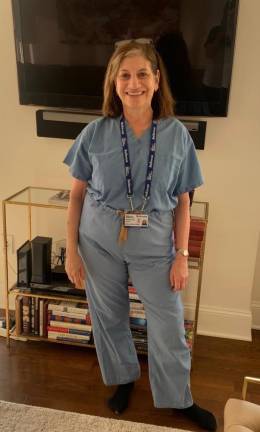Dr. Judith Salerno: The Bridge Builder of East 96th Street
Dr. Judith Salerno put “health equity” at the center of The New York Academy of Medicine’s work and messaging

Dr. Judith Salerno wants to build a bridge across East 96th Street. In fact, she’d like to be the bridge. She and the venerable New York Academy of Medicine, which she leads.
From its founding in 1847, The New York Academy of Medicine has played a significant role in the public health of New Yorkers. Its founders “agitated,” as Dr. Salerno put it, to start not only the Department of Health but also the Department of Sanitation. Then, as now, a cleaner city is a healthier city.
“The people who founded this organization knew early on that 80% of what keeps you healthy doesn’t happen in the clinic or the doctor’s office,” she said. This is why she sometimes calls the Academy “radical” in both thought and action, contradicting its perhaps stuffy image as a club for doctors.
When Salerno, who had been President and Chief Executive Officer of the Susan G. Komen Breast Cancer Foundation in Dallas, became the Academy’s president, she had no way to know that New York was about to embark on a dramatic and painful demonstration of the enduring importance of these “social determinants of health,” even in our era of high tech medicine.
What you do before a crisis often dictates how you will make it through the crisis. When Salerno arrived in late 2017, she placed the principle of “health equity” at the center of the Academy’s work and messaging.
“We did some surveys of fellows and friends of the academy,” she recalled of those early days. “And people were saying, ‘I don’t understand what health equity means?’ And now, every health organization out there is talking about health equity.”
The pandemic, of course, is what changed the conversation.
“I started getting calls from heads of similar organizations saying, ‘Well, how did you get your health equity platform up so quickly?’ And I said, Well, we’ve been working on this for almost four years now. So it’s not new to us.”
But knowing an issue is not, as Salerno notes, the same as living the issue.
“What really brought it home for me personally, was, at the beginning of the pandemic, at the end of March 2020, I volunteered full time to work at Bellevue. And what I saw there just was a mirror up to health care, and magnifying everything that was wrong with our health system. Those were very scary days. I worked in the ICUs, and palliative care, and everybody was dying. I worked there for a six-week period and I only saw one white patient the entire time.”
For her patients the “social determinants” of their health where things like whether they could work from home and what their home was like. She remembered reading medical charts describing immigrant patients who worked ten in a kitchen and lived in similarly crowded apartments.
“Those were the people who were dying,” she recalled. “I felt so helpless, being there in a high tech setting in an ICU, seeing everything that medicine had to offer. Yet we could not stem this infection, and we could not stop that. And it was because of what was going on in people’s lives. The lives they lead in New York City that didn’t allow them to escape to their house on Fire Island or the Berkshires. So it was a profound moment for me, personally, and it reinforced that everything we were doing was even more important.”
The man who arranged her role at Bellevue was Dr. Dave Chokshi, who went on to become the city’s health commissioner.
The Academy intensified its focus on health equity, both on challenges directly related to the pandemic, like vaccine distribution, and more systemic issues, such as improving environmental conditions in city housing and increasing the number of black and Hispanic doctors who can develop trust with communities.
“I feel like we were ahead of the curve. And that was what was radical. Because we were defining the problem in terms of a very broader view of health, that I think people have come to understand, particularly in the context of the pandemic. I have always seen our work, and I want our work to continue to be, transformational in health.”
Which is where that bridge comes in.
The New York Academy, Salerno notes, is a citizen of East Harlem, but hardly an ordinary one, based in a spectacular neo-renaissance building on the corner of 103rd and Fifth Avenue. “The New York Academy has had a bit of an ivory tower appeal,” she said. “This beautiful building, led through most of its history by older white men.”
But the academy has made a concerted effort to connect, serving as a food distribution site during the pandemic and reaching out to the community to discuss health challenges. “I want people to know that we are partners with the community. We want to collaborate. We want to do research that’s meaningful, that feeds back to communities, as well as health systems and can be applied for real systems change,” Salerno said.
“I always talk about what happens on 96th Street. That’s the dividing line between the Upper East Side and East Harlem. You cross the street and your life expectancy goes down seven to nine years. So what is it about 96th Street? It’s not about 96th Street, it’s about what’s available, what the assets are. The differences in privilege and accessibility to things that make one healthy. It’s a significant issue. We need to figure out a bridge across 96th Street, to really appreciate what we need to do level that playing field.”
“I always talk about what happens on 96th Street. That’s the dividing line between the Upper East Side and East Harlem. You cross the street and your life expectancy goes down seven to nine years.” Dr. Judith Salerno